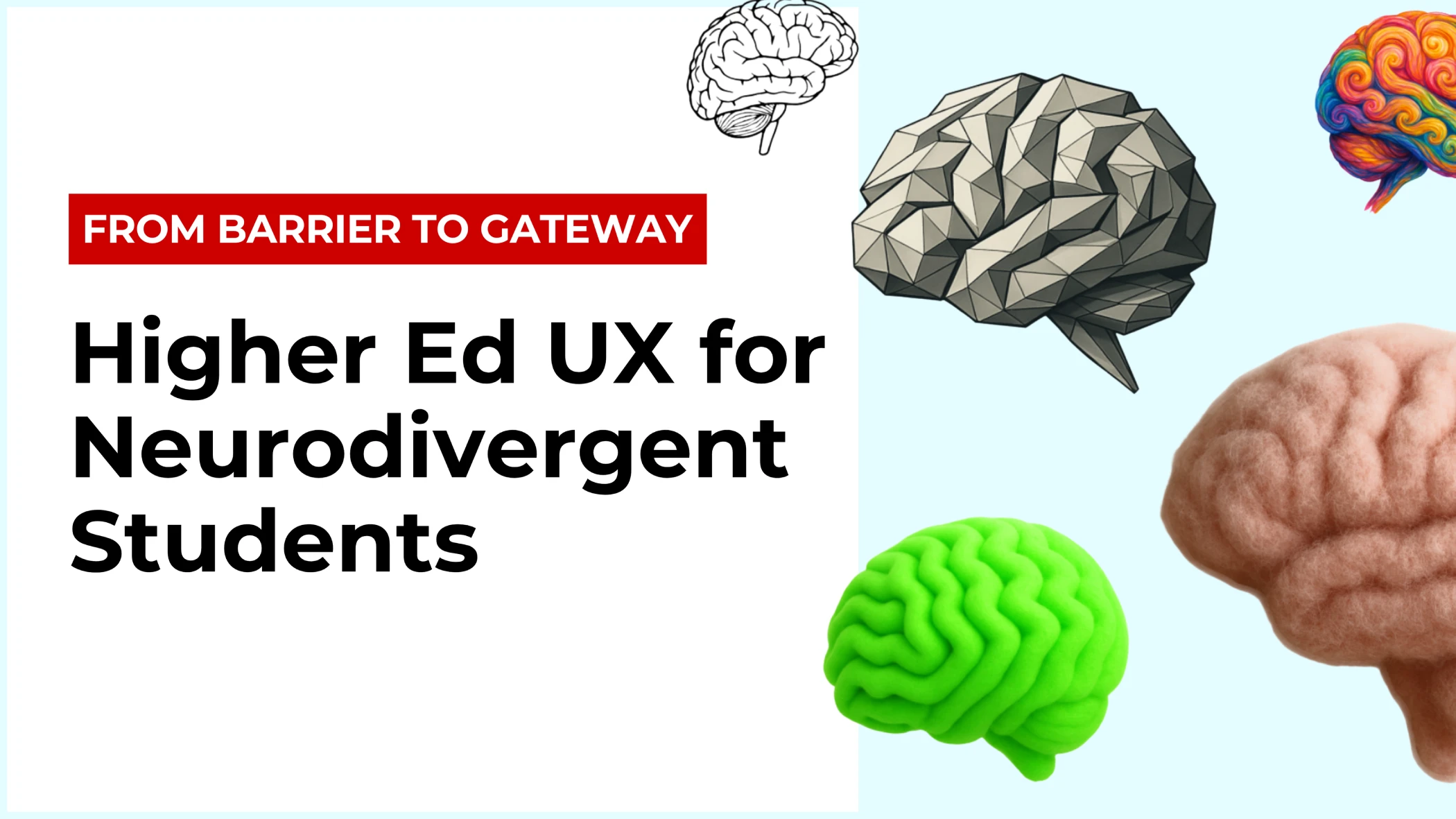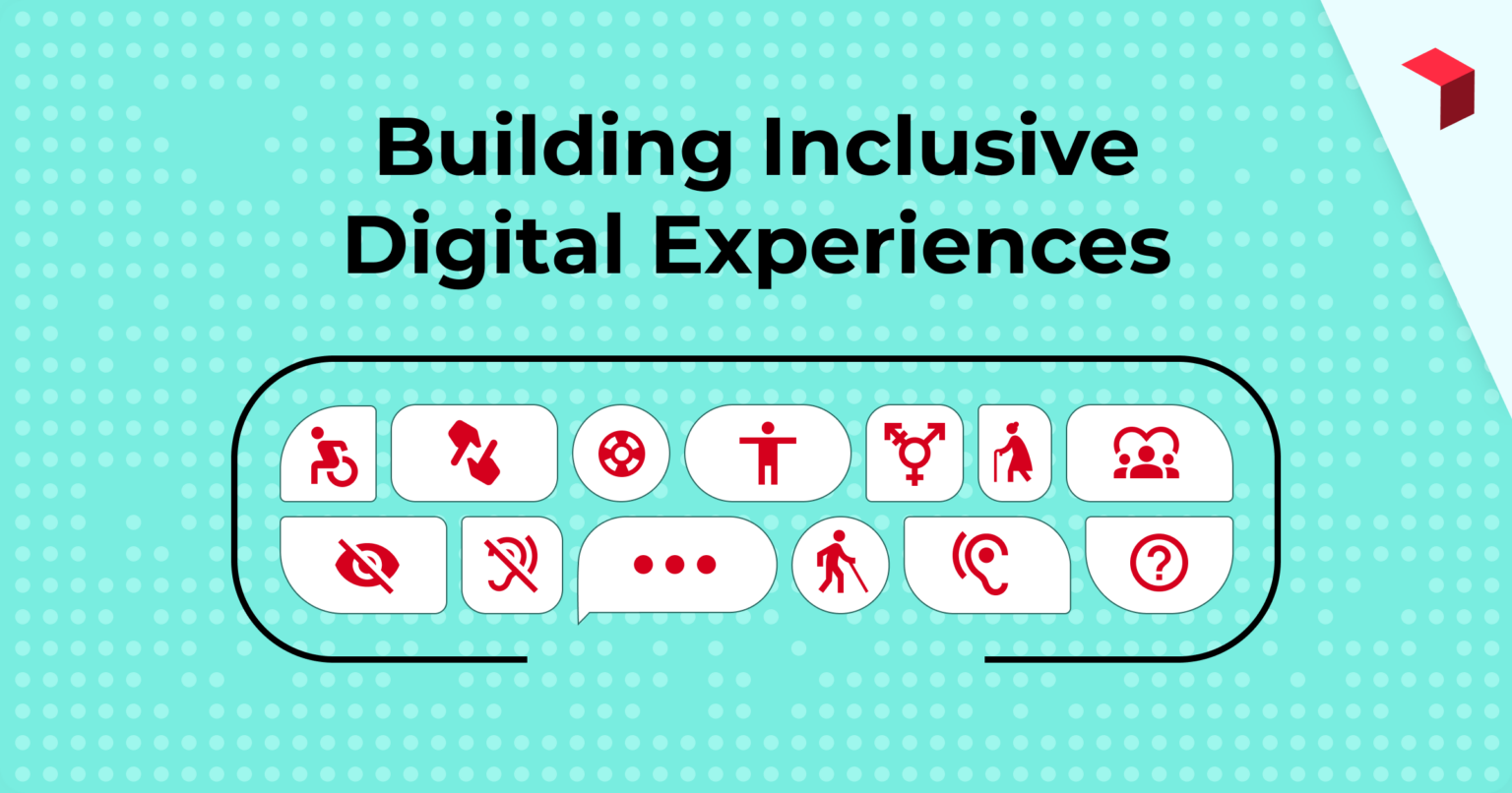A New Era for Accessibility in Higher Ed UX
Some estimates indicate 10-30% of students in higher education are neurodivergent. As awareness of the spectrum of brain function and behavior grows, colleges and universities face an urgent mandate: To ensure that their digital experiences aren’t just technically accessible—but truly inclusive. Accessibility that includes neurodiverse audiences can no longer be treated as an afterthought or a compliance checkbox. It must be baked into the design process from the start, supporting the diverse cognitive styles of today’s student population.
At the 2025 Digital Collegium Accessibility Summit, Empire State University and iFactory presented a compelling case study that showed what’s possible when UX design embraces cognitive diversity. Together, we created a web experience that removed barriers, supported neurodivergent learners, and ultimately improved outcomes for all users.
This post explores the research, strategies, and real-world outcomes of that collaboration and outlines what your institution can do to follow suit.
What Is Neurodivergence—and Why It Matters in Higher Ed UX
Neurodivergence is the concept that natural variations in the human brain—including how we learn, think, and process information—should be recognized and respected. Rather than viewing conditions like ADHD, autism, dyslexia, or anxiety as deficits, neurodivergence embraces them as part of human diversity.
This isn’t a niche issue—it’s a generational shift.
- 30% of adults under 30 identify as neurodivergent (compared to just 6% of adults over 65)
- Neurodivergent adults are 8x more likely to be unemployed
- 1 in 5 neurodivergent adults has not completed high school, creating systemic gaps in educational attainment
These gaps stem not from lack of ability, but from systemic barriers, including the design of digital environments.
For higher ed institutions, these statistics raise an important question: Is your website helping or hindering access? And, as a result, is your institution missing out on attracting a significant number of talented student prospects?
What We Heard: Real Insights from Real Students
To more deeply consider the boundaries of “accessibility” and ensure we serve access, the team at iFactory conducted deep qualitative research with Empire State University’s diverse student population. Through interviews, surveys, and focus groups, they listened to:
- Gen Z students
- Adult learners and degree completers (67% over age 32)
- Military-affiliated students
- Students who identified as neurodivergent
Here are some of the challenges the research helped us idenfity.
I have ADHD and anxiety, so online learning works better for me”
Student
Common UX Barriers for Neurodivergent Audiences
Sensory Overload
Complex layouts, intense colors, autoplaying videos, and animations can overwhelm users with ADHD, autism, and sensory sensitivity.
Ambiguous Language and Labels
Buttons like “Connect” or “Next” without context create confusion and hesitation, especially for users with anxiety.
Lack of Control
Many neurodivergent students in our research valued asynchronous engagement and online learning. Real-time interactions (like live chats or timed forms) often induce stress.
Unclear Form Expectations
When forms don’t explain what’s optional or what happens next (or are simply too lengthy), users may abandon the process altogether.
By hearing directly from neurodiverse students, the team gained clarity on common pitfalls and where they needed to focus in designing a truly accessible solution for what is ultimately a range of experiences under the umbrella of “neurodiversity.”
The fact that the interface allows me to choose when to interact is really important as someone with a disability.”
Student
What We Did: UX Strategies That Support Neurodiversity
Empire State University isn’t new to inclusion. As the first and only college designated as an Autism Supportive College, they’ve long prioritized support for nontraditional learners.
To reflect that mission online, they partnered with iFactory to build a website rooted in Universal Design. This approach aims to make environments usable by all people, to the greatest extent possible.
Key UX Strategies Implemented
Predictable, Left-Aligned Layouts
Neurodivergent users often benefit from clear visual structure. Left alignment and consistent formatting help reduce cognitive friction and support reading comprehension.
Global Motion Control
Animations and parallax effects can distract or even trigger symptoms for users with sensory sensitivities. By allowing users to turn off motion globally, the team gave back control to the user.
Short, Multi-Step Forms
A long, dense form can feel insurmountable. Breaking it into manageable steps—while making the second step optional—resulted in higher completion rates and less anxiety.
Bulleted Content and Infographics
Chunking information visually makes content easier to scan and retain, especially for users with dyslexia or ADHD.
Clearer Labels and Personalization
Vague buttons were replaced with specific calls to action. Personalized alerts helped users understand where they were in a process and what to expect next.
Disability Expert Embedded in the Team and Audience Testing
Accessibility wasn’t just a task, it was a lens applied to every meeting, decision, and prototype. A disability expert was involved throughout the UX and design process to ensure neurodivergent needs were never an afterthought.
Once a prototype could be made, the design went through user testing with a range of audiences, including individuals who identified as neurodiverse.
These solutions didn’t just help neurodivergent users—they created a better experience for everyone.
What Happened: Real Results from Inclusive UX
The results came fast, and they were significant.
While these numbers don’t just represent neurodiverse users, the impact of better serving all audiences is clear: In the first 2.5 weeks after launch, Empire State University saw:
In the first 2.5 weeks after launch, Empire State University saw:
- 993 Request Info form submissions
- 148 Applications started
- 74% of users who began the multi-step form completed the optional second step
These aren’t just numbers, they represent real students who might not have moved forward if the website hadn’t made things easier.
Inclusive UX didn’t just improve engagement. It helped the university connect with and support learners who were often overlooked on traditional web sites.
How to Apply These UX Strategies at Your Institution
Creating a neurodivergent-friendly web experience doesn’t require a full rebuild. It starts with a mindset and method.
Here’s how your team can get started
Here are four key takeaways for institutions looking to create neurodivergent-friendly websites:
Talk to Neurodiverse Users
Include neurodivergent students in research and usability testing to understand their unique needs.
Build for Maximum Flexibility
Offer features like motion control, asynchronous options, and simplified navigation to meet diverse preferences and empower audiences.
Be Simple and Unambiguous
Use clear language, predictable layouts, and direct calls to action to reduce confusion and improve comfort.
Be Alert and Adaptive
Approach design with curiosity, test iteratively, and be ready to pivot based on user feedback.
Accessibility Is a Gateway to Belonging
Empire State University and iFactory showed that intentional UX design can turn a barrier into a gateway. By embedding accessibility into the DNA of Empire State University’s digital presence, they didn’t just serve neurodivergent students—they empowered them from the very first stages of their relationship.
And in doing so, they raised the bar for what accessibility can mean in higher education.
When digital spaces work for those who struggle most, they work better for everyone.
Now’s the time to rethink your approach to accessibility, not just to comply with standards, but to build a sense of belonging, confidence, and success for every student who lands on your site. And to make sure your institution isn’t leaving great students at the gate.
Ready to Redesign for Inclusion?
Want to build a more inclusive, high-performing higher ed website? Contact us – we’re happy to chat about your institution and how we might help.
Let’s ensure that your campus becomes a place where every student feels seen, supported, and prepared to succeed.
Frequently Asked Questions
Neurodivergent-friendly web design creates digital experiences that work for students with ADHD, autism, dyslexia, anxiety, and other cognitive differences. This includes features like motion controls, clear navigation, simplified forms, and predictable layouts that reduce cognitive load and support different learning styles.
Accessible UX design can significantly boost enrollment by removing barriers that prevent students from completing applications. Empire State University saw 993 Request Info submissions and 148 applications started in just 2.5 weeks after implementing neurodivergent-friendly design changes.
The biggest barriers include sensory overload from animations and complex layouts, ambiguous button labels and instructions, lack of control over interactive elements, unclear form expectations, and forced real-time interactions like live chat that create anxiety.
Design for ADHD includes using predictable left-aligned layouts, breaking content into scannable chunks with bullet points, providing global motion controls to reduce distractions, using clear and direct button labels, and offering asynchronous interaction options instead of only real-time features.
Testing with neurodivergent users involves flexible research methods including one-on-one interviews, surveys, and usability sessions with accommodations like breaks, written responses, and comfortable environments. Partner with disability services offices to recruit diverse participants representing different types of neurodivergence.


